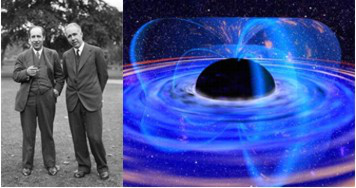Speaker
Hubert Bray
(Duke)
Description
In this talk we will discuss a geometric inequality which is in the same
spirit as the Positive Mass Theorem and the Penrose Inequality for black
holes. Whereas the cases of equality of these first two theorems are
respectively Minkowski space (which can be thought of as Schwarzschild with
zero mass) and the Schwarzschild spacetime with positive mass, the case of
equality for the inequality we will discuss is the Schwarzschild spacetime
with negative mass.
Physically speaking, when positive amounts of energy are concentrated as much
as possible, black holes results. However, when negative amounts of energy
are "concentrated" as much as possible, it is in fact possible to form point
singularities in each spacelike slice (which form a timelike curve of
singularities in the spacetime).
As usual we will focus on maximal, spacelike slices of spacetimes as a first
step. The assumption of nonnegative energy density on these slices implies
that these Riemannian 3-manifolds have nonnegative scalar curvature. However,
we will allow these 3-manifolds to have singularities which contribute
negatively to the total mass. The standard example is the negative
Schwarzschild metric on R^3 minus a ball of radius m/2, (1 - m/2r)^4
\delta_{ij}. This metric (which has total mass -m) has zero scalar curvature
everywhere but has a singularity at r = m/2. We will propose a definition for
the mass of a singularity, and prove a sharp lower bound on the ADM mass in
terms of the masses of the singularities in the 3-manifold, modulo an
interesting geometric conjecture.

